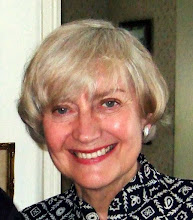THE ESSEX HUNDRED HISTORIES

ESSEX GIRLS
I always stick up for the admirable girls of our county. My friends, the authors Andrew Summers and John Debenham do likewise. View their "THE ESSEX HUNDRED HISTORIES" and see what I mean! ISBN 095522951-0
Imagination, foresight, money, power, determination, fragility, feeling and achievement are what most of us aspire to at one time or other. However we are sometimes the unfortunate victim of circumstances beyond our control. Essex Girls are a cut above average and history shows they are remembered. Below are a few who have made their mark.
We begin in AD60, when the original Colchester queen, Boudicca, (Boadicea) led a ferocious revolt against the Romans and is remembered as the first Briton who took the fight to the invaders.
600 years later a gentle young lady Osyth (or Ositha) the intended wife of Sighere, the Christian King of the East Saxons was beheaded by a marauding band of Vikings simply because she resisted their demands. Legends came into being and miracles are said to have happened in and around the Priory of St Osyth near Clacton.
Local guide books mention that in the 1300s two sisters of Saxon descent, Beornia and Synnove, were responsible for the two churches standing side by side in the village of Willingale.
Through out this period the Abbess of Barking held one of the most powerful positions in the Kingdom. Amongst the Abbesses were a number of Queens, Princesses and nobles. Katherine de Pole was one who gave sanctuary, cared for and educated the Tudor children during the Wars of the Roses.
Anne Boleyn, the second wife of Henry VIII and mother of Elizabeth I, had strong connections with Rochford. She met her fate when she was betrayed by others.
Margaret Beaufort, mother of Henry VII (the first Tudor King), held a number of estates in Essex. She founded St John’s College Cambridge. 100 years later Dorothy Wadham, daughter of Sir William Petrie of Ingatstone, was the founder of Wadham College, Oxford.
In 1588 Queen Elizabeth I, although not an Essex Girl, by birth chose Tilbury to make her most famous speech ‘I have the body of a weak and feeble woman’
Margaret Lucas, born in Colchester in 1623, was destined to become the most famous authoress of her day. She excelled in writing poetry and philosophy in spite of being exiled during the turbulent times of the English Civil War.
Have you ever noticed who is on the back of a five pound note? The lady is Elizabeth Fry the great prison reformer based in Plaistow in 1810. She has been featured on this denomination since 1992.
One hundred years later another Essex lady came to prominence in Braintree. Elizabeth Courtauld the wife of the industrial magnate Sam, was the first to run a crèche on an organised basis.
During the First World War at Chalkwell, Ellen Elizabeth Josceyln inherited a beach business from her husband when he suddenly died in 1917. Nearly everybody said she would not be able to cope. She did and the beach business thrived and ran for over 30 years. Today the seaside beach by Chalkwell rail station is still affectionately referred to by locals as Joscelyn’s Beach.


<< Home